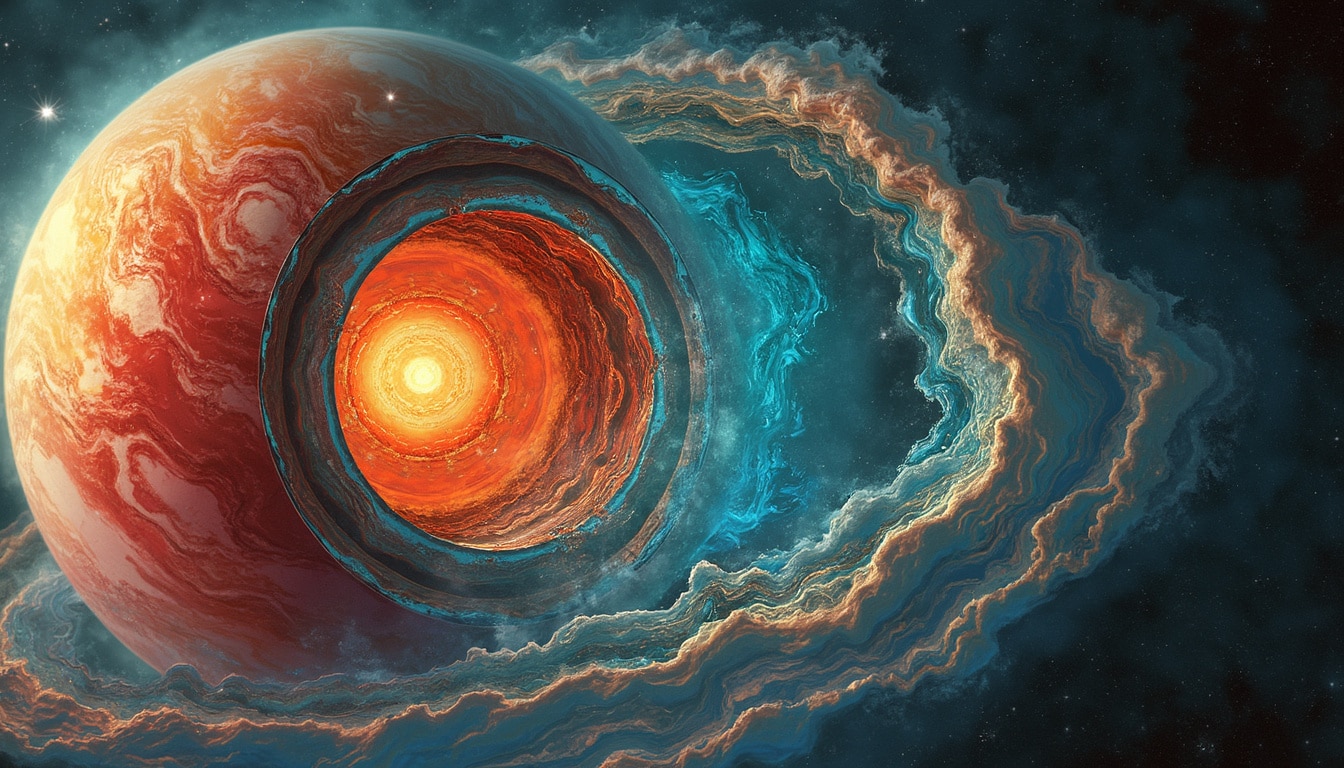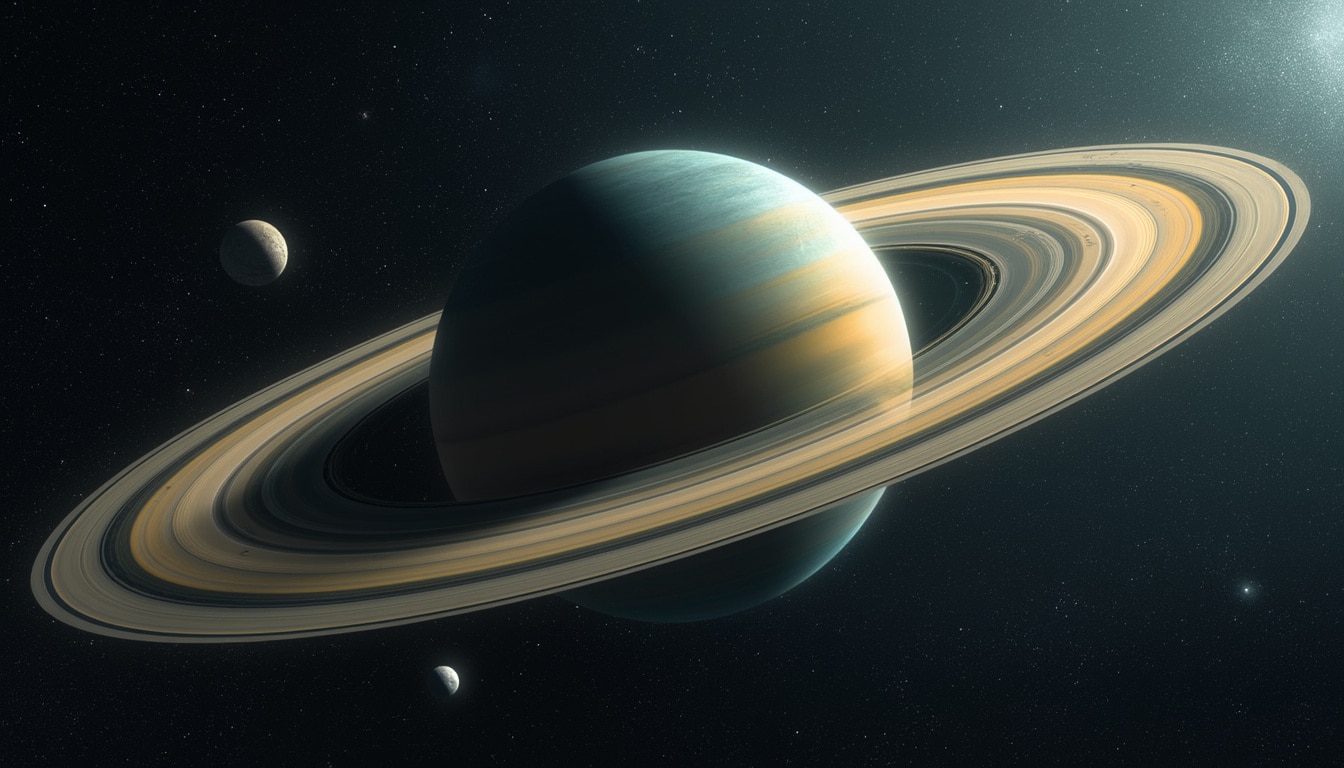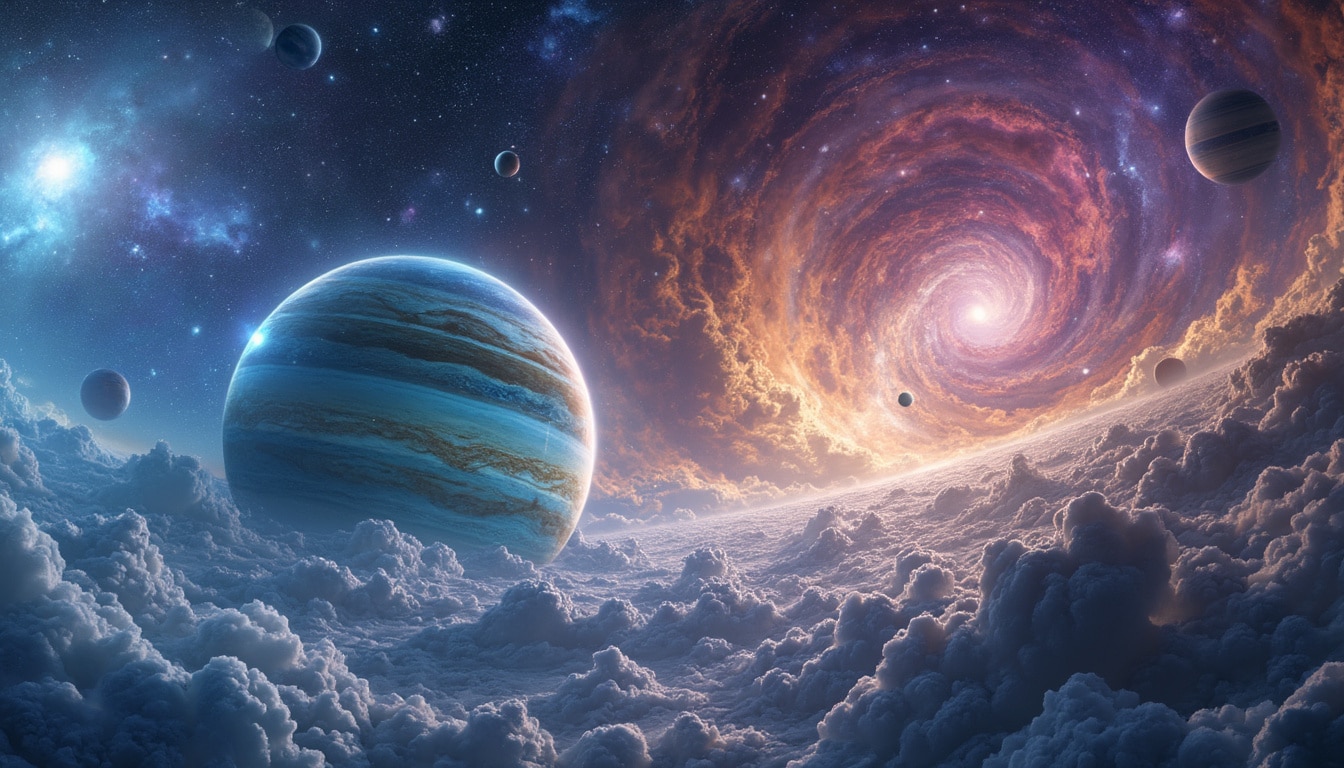The gas giants of our solar system—Jupiter, Saturn, Uranus, and Neptune—enchant and mystify astronomers and space enthusiasts alike. They are colossal entities that dominate the outer reaches of our celestial neighborhood. Understanding these gas giants is not just about their massive sizes and beautiful atmospheres, but also about their complex formation histories, unique compositions, and the role they play in the dynamics of our solar system.
This exploration takes us through the defining characteristics of gas giants, their evolution, and their impact both within and beyond our solar system. From the rich cloud layers that envelop Jupiter and Saturn to the cooler, peculiar atmospheres of Uranus and Neptune, each giant offers distinct features and mysteries waiting to be unveiled. Join me on this journey as we dive deep into the world of gas giants.
Formation and Evolution of Gas Giants
The formation of gas giants is a subject of ongoing research and fascination. The prevailing theories suggest that these massive planets formed in the cold, distant parts of the solar system, beyond the ‘Frost Line’, where volatile compounds like water, ammonia, and methane could condense into solid ice particles. Initially, a solid core formed from the accretion of dust and ice. Once this core reached a sufficient size, it began to attract enormous amounts of gas from the surrounding nebula, primarily hydrogen and helium.
Jupiter and Saturn, being the largest among the gas giants, garnered immense gas compositions, creating thick atmospheres filled with swirling clouds and storms. Their formation process was efficient due to their proximity to the abundant gas within the solar nebula. On the other hand, Uranus and Neptune, located further out, faced challenges in their gas accumulation, resulting in their classification as ‘ice giants’—a distinction that reflects their higher concentrations of icy materials relative to hydrogen and helium.

The Frost Line and Planetary Formation
The Frost Line is a critical concept in understanding where gas giants can form within a solar system. This imaginary boundary marks the point in a solar nebula where temperatures are cold enough for volatile compounds to freeze into solid grains. Inside this line, closer to the sun, terrestrial planets like Earth and Mars formed, composed primarily of rock and metal. Beyond the Frost Line, conditions allowed for the accumulation of much larger bodies and the formation of gas giants.
Jupiter and Saturn stand testament to this theory, showcasing their voluminous atmospheres rich in hydrogen and helium. In contrast, Uranus and Neptune struggled to acquire similar gas compositions, resulting in their unique statuses as ice giants. Their compositions reveal a fascinating layer of complexity as they consist of heavier elements and compounds in significant amounts, influencing their atmosphere and weather patterns.
Composition and Structure of Gas Giants
The composition of gas giants is fundamentally different from that of terrestrial planets. Jupiter and Saturn primarily consist of hydrogen and helium, forming vast, thick atmospheres. These gases are not found in gaseous form alone; extreme pressures deep within the planets lead to the existence of liquid and metallic hydrogen layers beneath the outer atmosphere.
Interestingly, the presence of a rocky core is a common trait amongst these giants. While gas giants appear predominantly gaseous, their inner structure is much more complex. A rocky core, primarily made of silicate rock and metal, exists beneath the layers of gas, serving as the foundation for the dense atmospheres that envelop them. This core can range significantly in size depending on the planet, influencing its gravitational field and its overall dynamics.

Differentiating Gas Giants: Jupiter and Saturn vs. Uranus and Neptune
When it comes to visual characteristics and atmospheric features, Jupiter and Saturn present a stark contrast to Uranus and Neptune. Jupiter and Saturn boast vibrant and dynamic cloud systems, characterized by colorful bands, storms, and atmospheric phenomena that captivate amateur and professional astronomers alike. The Great Red Spot on Jupiter is an iconic feature that has persisted for over 350 years, indicative of the planet’s turbulent atmosphere.
In comparison, Uranus and Neptune exhibit a more subdued appearance. Lacking the prominent cloud bands found on their larger counterparts, these ice giants have a unique azure and teal tint, which is a result of their different atmospheric compositions and chemical reactions. They are less visually complex in terms of dynamic weather; however, studies suggest they may possess storm activity that is yet to be thoroughly explored.
The Role of Gas Giants in the Solar System
The presence of gas giants is crucial within the dynamics of our solar system. Their immense gravitational forces help anchor the orbits of other celestial bodies between inner terrestrial and outer gas giants. This gravitational influence can shape the trajectories of comets and asteroids, guiding them along paths that may result in potential collisions or ejecting them out of the solar system entirely.
Gas giants also play a role in the formation of their moons and rings. They often possess extensive systems of moons, many of which are intriguing worlds in their own right. For example, Jupiter has over 79 confirmed moons, including Ganymede, the largest moon in the solar system. Saturn follows closely, exhibiting a volatile array of moons and the most extensive ring system among all the gas giants.

The Asteroid Belt’s Influence
The Asteroid Belt, located between Mars and Jupiter, also plays an essential role concerning gas giants. This region comprises numerous rocky fragments that did not coalesce into planets during the early formation of the solar system. The gravitational forces exerted by Jupiter significantly influence the stability of the Asteroid Belt, preventing the fragments from coalescing into a planet while potentially redirecting some towards the inner solar system.
The interactions between the gas giants and the Asteroid Belt demonstrate the intricate balance established through gravitational forces, illustrating the interconnected nature of our solar system’s architecture. In addition to acting as a barrier, gas giants can also be considered ‘cosmic vacuum cleaners,’ as their size allows them to capture debris, thereby shielding inner planets from potential impacts.
Gas Giants in the Context of Exoplanets
The study of gas giants extends beyond our solar system, as astronomers and scientists actively search for and analyze exoplanets. The majority of discovered exoplanets have shared similarities with our gas giants, known as ‘Hot Jupiters.’ These massive planets often orbit close to their stars, causing them to exhibit extreme temperatures and conditions unlike those found in our solar system.
Exoplanet studies have revealed a diverse range of gas giants with various characteristics that challenge traditional classifications. From Super-Jupiters to gas dwarfs, the exploration of these distant worlds continuously expands our understanding of planetary formations and the environmental conditions that can exist on such massive bodies.

Understanding Planetary Systems Evolution
Research on gas giants aids in understanding how planetary systems evolve over time. The dynamics created by their massive sizes influence the formation of other planets, the dynamics of satellite systems, and the gravitational interactions that dictate the arrangement of celestial bodies. The variety of gas giants discovered around other sun-like stars indicates that gas giants likely play an essential role in shaping the overall architecture of planetary systems.
By analyzing the characteristics of gas giants within our solar system and comparing them to their counterparts beyond, astronomers can better appreciate the varying conditions under which these planets can form. Knowledge about gas giants contributes significantly to our understanding of planetary science as well as the potential for life on planets that orbit other stars.
While the exploration of gas giants continues to unfold, the knowledge gained about their formation, composition, and roles within planetary systems adds invaluable insight into understanding the complexities of our universe. As scientists continue to unravel the mysteries surrounding these behemoths, each discovery not only sheds light on the individual planets but also on the broader dynamics governing celestial phenomena.




Leave a Reply